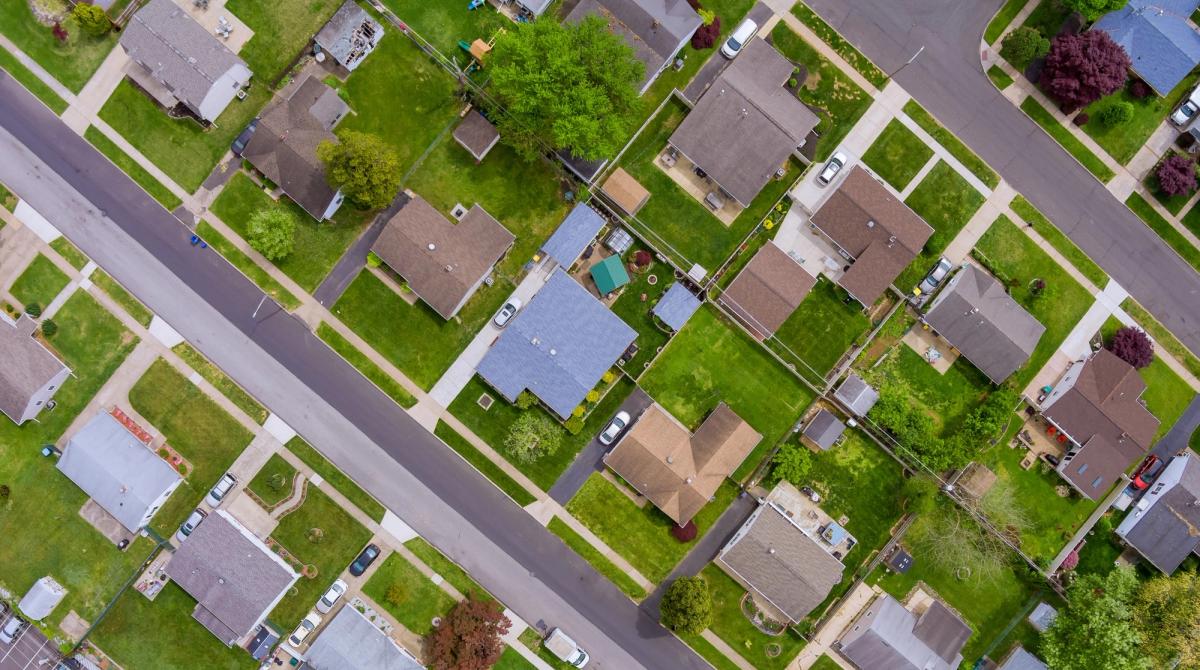What is the No-Mow Movement? And, why should you choose native plants?

Ditch the lawn mower and turn to native plants to create beautiful, no mow landscapes! Learn how My Home Park's pre-designed native plant collections work as sustainable, no mow lawn alternatives.
Ditch the lawn mower and turn to native plants to create beautiful, no mow landscapes! Learn how My Home Park's pre-designed native plant collections work as sustainable, no mow lawn alternatives.

The American grass lawn, once a symbol of status and suburban life, is now facing harsh criticism for its environmental hazards. The perfect, neatly trimmed turf requires vast amounts of water, fertilizer and pesticides. Lawns are notorious for contributing to climate change and biodiversity loss. In response to this idea, many environmental activists and home owners started the "No Mow" movement, to encourage people to stop mowing and growing their lawns and look for better alternatives.
Before we learn about the no mow initiative, it's important to learn about the history of lawns and how they became such a ubiquitous feature in the American landscape.

History of Lawns
The idea of trimmed grass, as a symbol of eliteness, was adopted by early European settlers. The French word "Launde" gave birth to the concept of lawns, which were strictly meant to identify the homes of the rich. Lawn maintenance required a significant amount of money and labor, making it a clear indication of the economic status of the house owner.
This trend soon spread to the wealthy class of Americans, and later on, to the middle class. After the invention of lawnmowers, lawns quickly replaced native wilderness and vegetable gardens in most American backyards. By the 1990s, lawns dominated the American landscape and became the number one irrigated crop in the country. The well-manicured lawn became a potent symbol of the 'American dream' and conveyed a positive impression of a household.

Why is the traditional grass lawn bad for the environment?
The traditional lawn might look appealing with its lush green appearance, but it comes with a significant number of drawbacks. These range from the amount of time, money and resources required to maintain a lawn to the negative impact lawns have on the environment.
Let's understand these drawbacks in detail.
Water Consumption
According to the United States Environmental Protection Agency, an average American household uses 320 gallons of water per day, of which about 30% (approximately 96 gallons) is used for watering lawns. That's shocking, isn't it?
Maintaining a lush and green lawn demands high amounts of water, which can strain the water supply in arid regions and places with extended periods of dry spells. Not to mention the hefty water bills you will pay to water a non-functional carpet of grass!

Lawn Maintenance
Lawn care requires significant amount of effort, money and time to keep it in pristine condition. From regular mowing to edging, fertilizing and controlling pests, the tasks almost seem endless! If you are homeowner doing all these tasks by yourself, imagine spending the same amount of time with your family or pursuing a new hobby!
Furthermore, the use of chemicals and pesticides add to soil and water pollution, while the gas powered lawn mowers emit greenhouse gases into the atmosphere, contributing even more to climate change.
Environmental Impact
Lawns do not serve any ecological purposes except for conforming to a very specific 'standard' of beauty. Lawns cannot support the needs of pollinator species, beneficial insects and local wildlife. By replacing native trees and shrubs which host a wide range of species, lawns cause a serious ecological imbalance.
What is the No-Mow Movement?
The No-Mow movement is an initiative created to encourage homeowners, and even municipalities, to ditch the old-fashioned grass lawn in favor of sustainable landscaping practices. The movement is all about embracing the natural beauty of our surroundings and working with nature, rather than against it.
Why are native plants crucial to a No Mow landscape?

Native plants are those that have perfectly adapted to the local climate and soil conditions. This means they require less water, fertilizers and other resources compared to lawns or non-native species. They are also more resistant to pests, diseases, thus reducing the need for chemical pesticides.
The key benefit of using natives instead of lawn, is their role in supporting the local biodiversity. For examples, wildflowers and native shrubs offer food and habitat for bees, butterflies, hummingbirds and other pollinators, while native grasses provide nesting sites for birds and small mammals. Ground covers like white clover naturally control weeds and keep pesky plants out of your garden.
No-mow landscapes like native gardens can have significant benefits on the environment. They reduce your carbon footprint, save water and improve the quality of air and soil around us.
Native Plant Gardens: My Home Park's low maintenance lawn alternatives
If you are looking for no-mow lawn alternatives, My Home Park's pre-designed native plant collections are the best option! These combos are carefully put together to create a beautiful and functional landscape that requires low maintenance and water usage. We use plant varieties that are drought tolerant, easy to establish, attract wildlife and work as a low maintenance lawn alternatives.


Share this article


